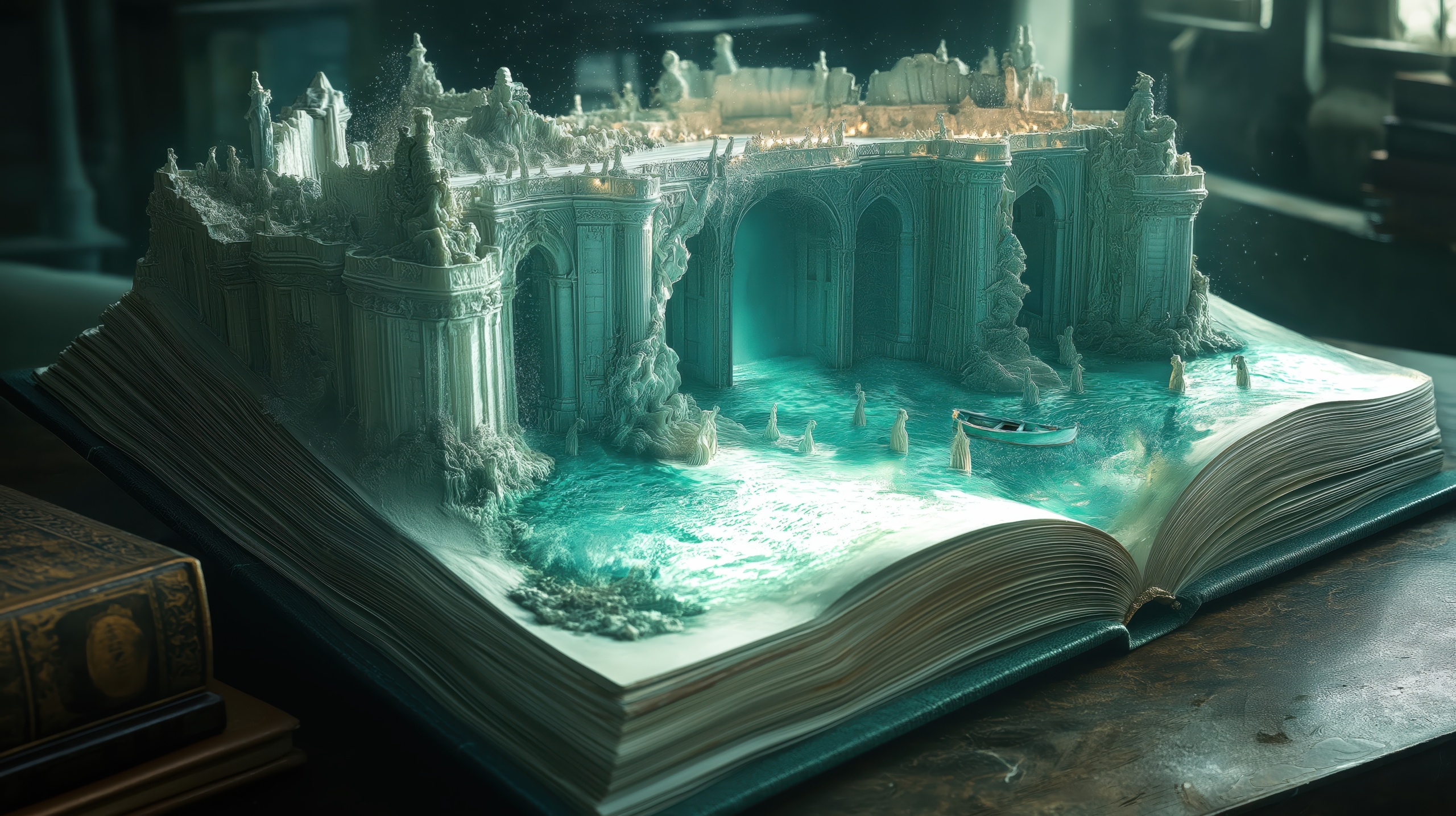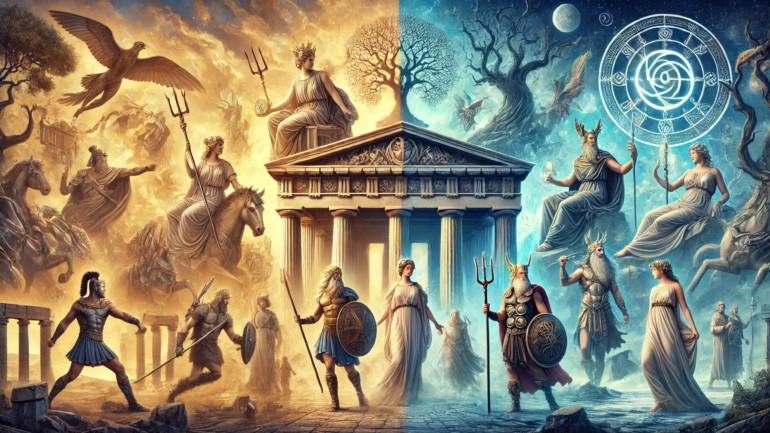Dante’s Divine Comedy: The First Book of the Renaissance
In the previous class, we discussed St. Francis of Assisi, whose revolutionary Christian ideals paved the way for the great figures of the Renaissance. With the stage set, the grand drama of the Renaissance began.
The earliest Renaissance ideas emerged in literature. Today, we’ll focus on the “Three Literary Masters of the Renaissance,” not to be confused with the “Three Artistic Masters.”
Dante’s Divine Comedy: The First Book of the Renaissance
- The “Three Literary Masters of the Renaissance” are Dante (Dante Alighieri), Petrarch (Francesco Petrarca), and Boccaccio (Giovanni Boccaccio). Renaissance thought first appeared in literature for two primary reasons:
- Literary works had greater reach and developed faster than art.
- The printing press had yet to be invented, and poetry, being easy to recite and sing, naturally facilitated the spread of literary ideas.
- The term “Renaissance” refers to the revival of ancient Greek and Roman art. After being suppressed during the Middle Ages, society lacked cultural accumulation for nearly a thousand years. To progress, they could only look back to ancient Greece and Rome as benchmarks to emulate.
- Dante’s Divine Comedy (Commedia Divina) is hailed as the “First Book of the Renaissance.” It was the first literary work since the Middle Ages to reflect humanist ideals, marking the beginning of the Renaissance era. Its importance lies not in its literary artistry but in its unprecedented attempt to clearly describe a worldview that even the Bible left ambiguous—Hell, Purgatory, and Heaven.
- Dante, born in Florence in 1265, was a contemporary of Kublai Khan in China. Initially, Dante was not a professional writer but a politician. After losing a political struggle and being exiled, he penned his epic poem, The Divine Comedy. This fantastical travelogue describes Dante’s idol, the great Roman poet Virgil, guiding him through Hell, Purgatory, and Heaven, with detailed depictions of each realm’s structure and content.
- In The Divine Comedy, Hell is depicted as a nine-layered funnel, with each progressively smaller layer reserved for sinners of different crimes. Heaven also has nine levels, where individuals ascend based on their virtue, with the highest level granting access to see Jesus under the Virgin Mary’s permission. In between, Purgatory comprises seven layers, each corresponding to one of the Seven Deadly Sins. Purgatory serves as a place for those with insufficient virtue but no grave sins to undergo purification before ascending to Heaven.
- The Divine Comedy reflects a strong spirit of questioning the Church. Dante even condemns clergymen, including the Pope, to Hell to accompany Satan, while reserving Heaven for the sages and philosophers of ancient Greece and Rome. Through this, Dante expresses profound reverence for Greco-Roman antiquity.
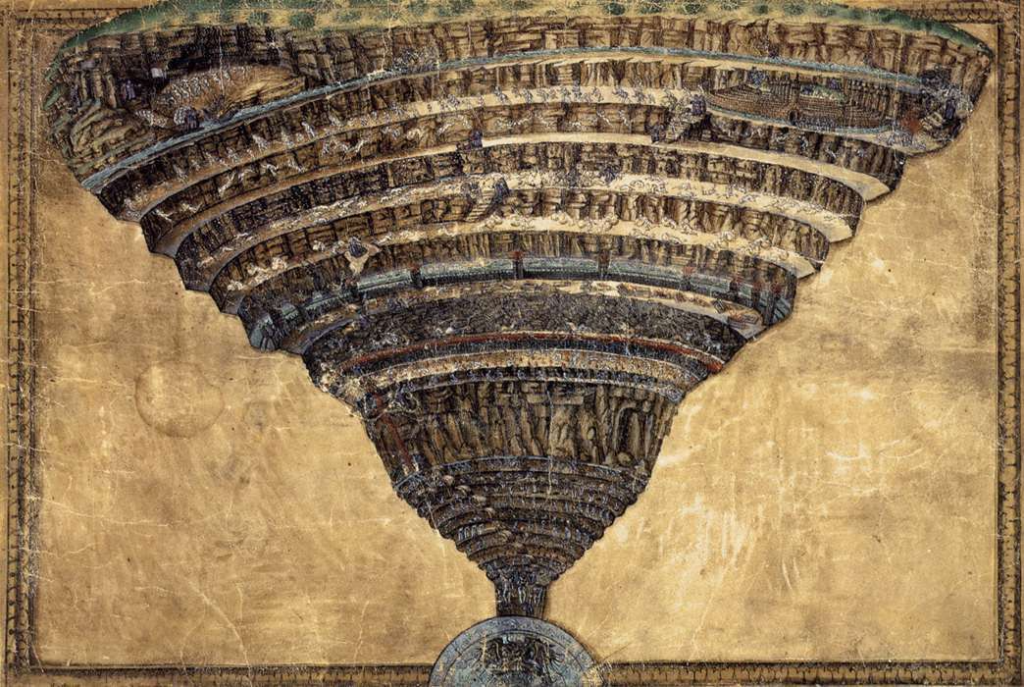
(Figure 1) Hell
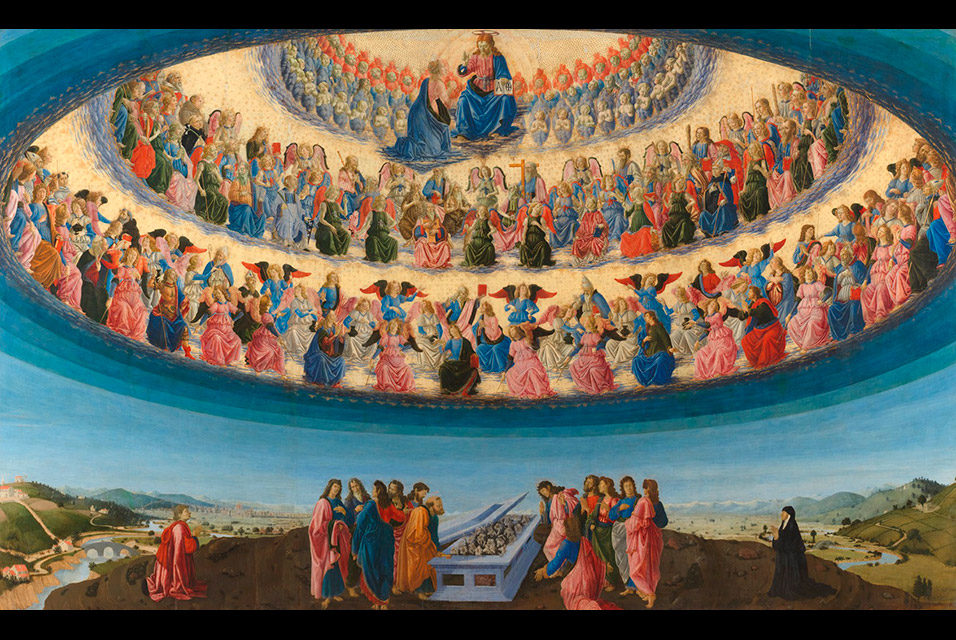
(Figure 2) Heaven
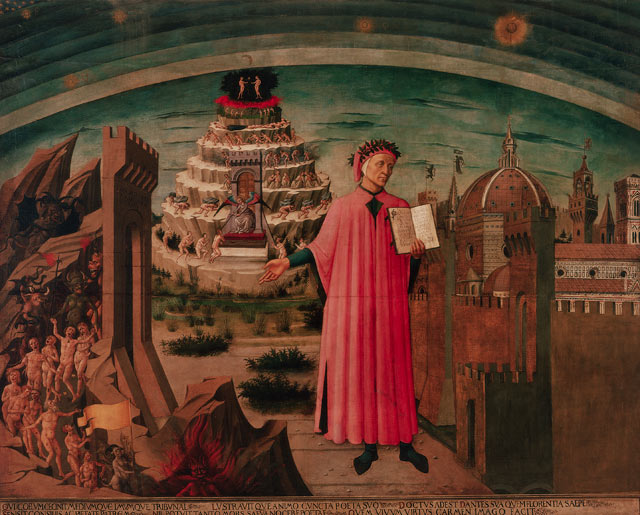
(Figure 3) Purgatory
Recommended Films
The Divine Comedy references the “Seven Deadly Sins” in Purgatory, a theme that has been widely embraced in many films. One notable example is the suspense thriller Se7en, starring Morgan Freeman and Brad Pitt. The movie’s unexpected and gripping ending has cemented its status as a classic.
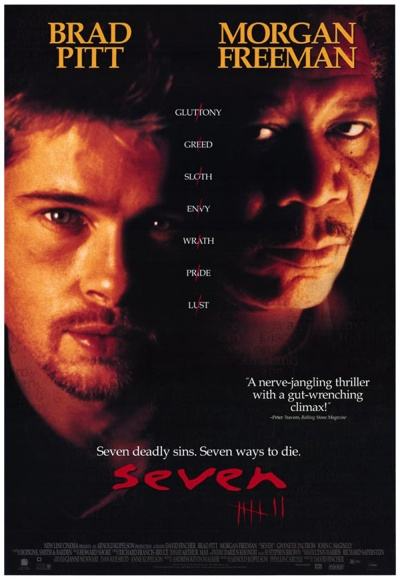
“Seven Deadly Sins” Poster
Another recommendation is the 2009 Japanese anime *Fullmetal Alchemist: Brotherhood*, created by renowned mangaka Hiromu Arakawa. In the series, the seven homunculi who serve the main antagonist each embody one of the Seven Deadly Sins. Despite being an anime, the show features a grand and thought-provoking narrative, making it a compelling watch for adults.
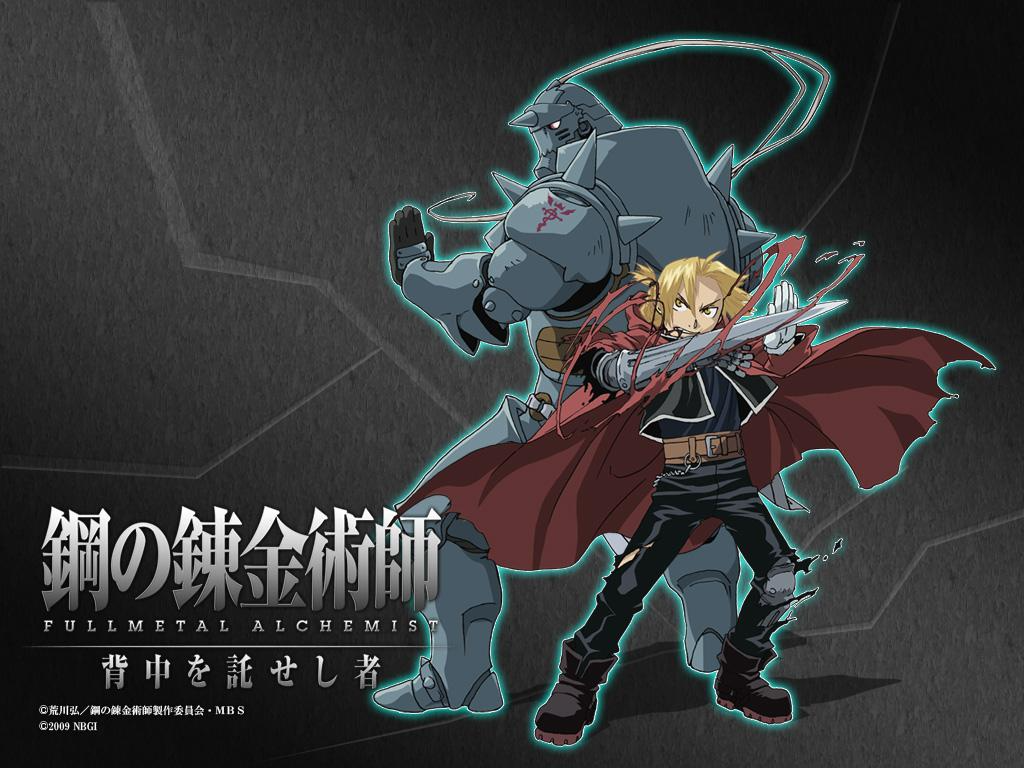
“Fullmetal Alchemist: Brotherhood” Poster
